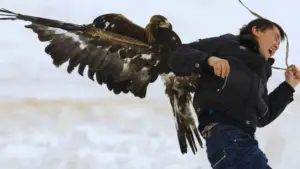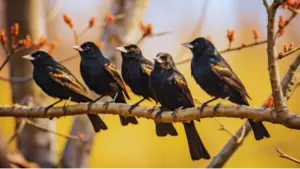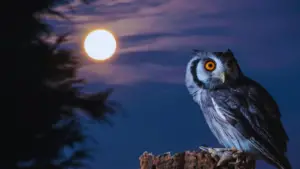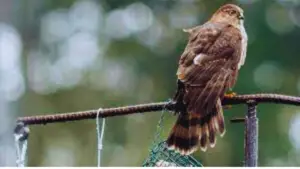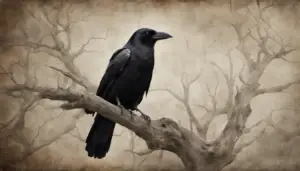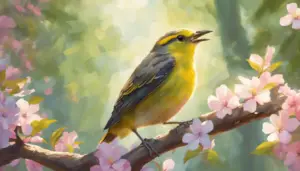Hey there! Have you ever wondered what is a group of owls called? Well, get ready to dive into the fascinating world of avian terminology!
In this article, we’ll explore the unique names given to different groups of birds, and specifically, we’ll unravel the mystery behind the collective noun for owls.
Birds have some pretty interesting names for their gatherings, and owls are no exception. So, let’s take a closer look at what these wise and majestic creatures are known as when they come together.
But that’s not all! We’ll also discover other captivating group names for birds, debunk some common misconceptions, and even learn a few fun facts along the way. Plus, we’ll touch on the importance of bird conservation and how understanding avian terminology can help us appreciate and protect these incredible creatures.
So, get ready to spread your wings and embark on this thrilling journey into the world of avian terminology. Let’s start unraveling the mystery of what a group of owls is called!
Key Takeaways
- Avian terminology adds depth and intrigue to our understanding of birds and their grouping patterns.
- Bird conservation is crucial for preserving ecosystems and ensuring the overall health of the planet.
- Avian terminology deepens our appreciation and understanding of birds and their unique characteristics and behaviors.
- Collective nouns for birds reflect the beauty and wonder of the bird world, adding charm to our language.
Introduction to Avian Terminology
Alright, let’s dive into the fascinating world of avian terminology and learn about the quirky names we give to different groups of birds! Avian terminology refers to the unique vocabulary associated with birds and their grouping patterns. It’s a captivating aspect of the natural world that adds depth and intrigue to our understanding of these fascinating creatures.
One of the most interesting aspects of avian terminology is the names we give to groups of birds. For instance, did you know that a group of owls is called a parliament? Yes, you heard that right! Just like lawmakers gather in a parliament, owls also gather together in a group with this peculiar name.
The term ‘parliament’ originates from the Latin word ‘parliamentum,’ meaning a speaking or talking place. This name perfectly captures the mysterious and wise nature often associated with owls. It paints a vivid image of these nocturnal birds coming together to discuss important matters in their own unique way.
So, the next time you come across a group of owls, you can impress your friends with the knowledge that you know what they’re called. It’s just one example of the countless avian terms out there, waiting to be discovered and shared with others who are as fascinated by the avian world as you are!
Collective Nouns for Birds
When it comes to describing a group of birds, including owls, there are specific collective nouns that have been assigned over the years. These terms are not only interesting but also help to add color and character to our language. Here are a few collective nouns for birds that you may find fascinating:
- A murder of crows: This term may sound eerie, but it actually refers to a group of crows. Perhaps it comes from the old belief that crows would gather around to decide the outcome of a murder trial.
- A parliament of owls: Yes, you read that right! A group of owls is known as a parliament. This term is derived from the belief that owls are wise and intelligent creatures capable of making important decisions.
- A charm of finches: Finches are small, colorful birds known for their beautiful songs. When seen together, they are referred to as a charm, which perfectly captures their captivating presence.
- A flotilla of ducks: Ducks are often seen swimming together in a group, creating a picturesque scene. The term flotilla is used to describe this gathering, evoking the image of a fleet of boats floating on water.
These collective nouns not only give us a glimpse into the world of birds but also allow us to appreciate the diversity and beauty of nature in a unique way.
A Parliament of Owls
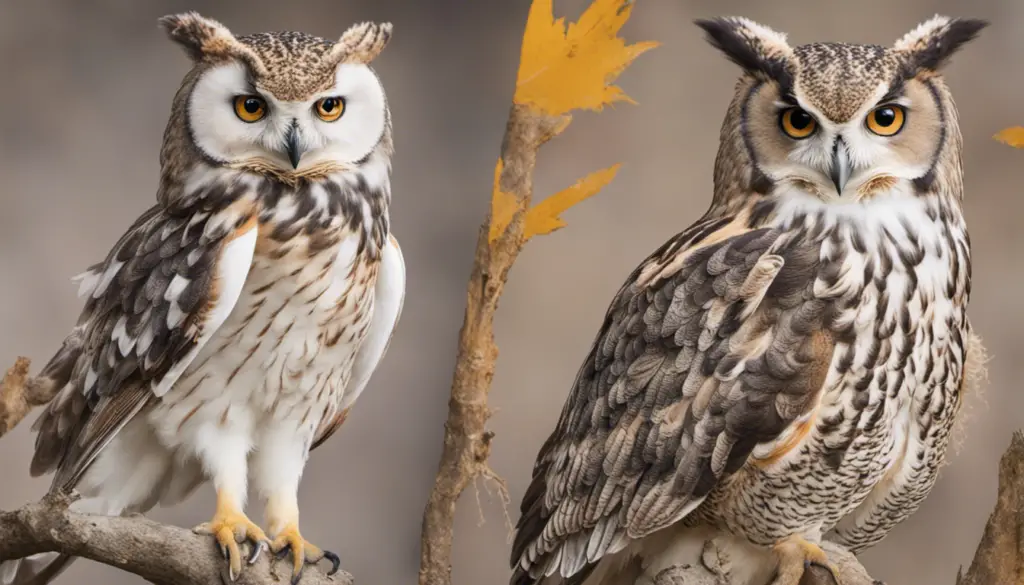
Derived from the belief in their wisdom and intelligence, a parliament of these nocturnal creatures embodies the power of collective decision-making.
Owls, with their enchanting eyes and silent flight, have fascinated humans for centuries. A parliament refers to a group of owls, and it is a fitting name for these majestic birds. Just like a group of politicians, owls gather together to discuss and make important decisions. They hoot and communicate with each other, their voices echoing through the night.
It is during these gatherings that they establish territories, plan hunting strategies, and even select their mates. The parliament of owls showcases their ability to work as a team, relying on each other’s strengths and knowledge. They understand the importance of unity and collaboration, and this is what makes them such successful predators.
So, the next time you come across a group of owls, remember that they are not just a random assembly, but a wise and strategic parliament, demonstrating the power of collective decision-making.
A Murmuration of Starlings
Marvel at the magnificent murmuration of starlings as they move in mesmerizing patterns across the sky. These incredible displays of synchronized flight are a sight to behold and leave spectators in awe. Here are three fascinating facts about starling murmurations:
- Complexity: The patterns created by a murmuration are not random but highly coordinated. Each bird follows a set of simple rules, such as maintaining a safe distance from neighbors and matching their speed and direction. This results in the mesmerizing shapes and formations we see in the sky.
- Safety in numbers: Starlings gather in large flocks for protection against predators. A murmuration can consist of thousands or even millions of birds, making it difficult for a predator to single out an individual target. The constant movement and changing patterns also confuse potential threats.
- Communication: Starlings communicate with each other during a murmuration through a combination of visual cues and sound. They use these signals to stay together and respond quickly to any changes in the flock’s direction. It’s a remarkable display of cooperation and teamwork.
Next time you witness a murmuration of starlings, take a moment to appreciate the complexity, safety, and communication skills involved in this natural phenomenon. It’s truly a testament to the wonders of nature.
Other Unique Group Names
Imagine a group of wise owls encircling you, their piercing eyes and hushed conversations casting a sense of mystery and knowledge. The avian world is full of unique group names that add an extra layer of fascination to these remarkable creatures.
For instance, did you know that a group of crows is called a murder? It sounds ominous, doesn’t it? But it actually refers to their habit of gathering in large numbers.
Similarly, a congregation of penguins waddling together is called a rookery. Picture the adorable scene of these flightless birds huddling closely for warmth and protection.
Moving on, have you ever heard of a flamboyance of flamingos? It perfectly captures the vibrant and flamboyant nature of these elegant birds. And let’s not forget about a charm of finches, as these small songbirds are known for their melodic voices and colorful plumage.
From a business of ferrets to a pandemonium of parrots, the variety of group names in the avian world is truly endless. Each name reflects the unique characteristics and behaviors of these creatures, creating a sense of wonder and intrigue.
So, the next time you encounter a group of birds, take a moment to appreciate their collective name and the stories it tells about their captivating lives.
The Origins of Avian Terminology
As you delve into the world of bird names, you’ll uncover the captivating origins behind the terminology that describes these magnificent creatures.
Avian terminology has its roots in various sources, including mythology, cultural beliefs, and scientific observations.
Many bird names are derived from Latin or Greek words, reflecting the influence of ancient civilizations on the study of birds. For example, the word ‘owl’ comes from the Old English word ‘ule,’ which is derived from the Latin word ‘ulula.’ The Latin word ‘ulula’ was used to describe the sound made by owls.
Similarly, the word ‘raven’ comes from the Old English word ‘hræfn,’ which can be traced back to the Proto-Germanic word ‘hrabnaz.’ This word was associated with the dark and mysterious appearance of ravens.
Other avian names have more mythological origins, such as the phoenix, a legendary bird that is said to rise from its own ashes.
The origins of avian terminology are as diverse and fascinating as the birds themselves, reflecting the rich cultural and scientific history of our relationship with these creatures.
Cultural and Historical Significance
Discover the cultural and historical significance behind the names given to these magnificent creatures, and let yourself be transported to a world where birds hold a special place in our collective imagination. Throughout history, humans have attributed various meanings and symbolism to different groups of owls. These names not only reflect our fascination with these nocturnal creatures but also shed light on our cultural beliefs and values.
| Group Name | Cultural/Historical Significance |
|---|---|
| Parliament | Associated with wisdom and knowledge, owls were often seen as the wise advisors in ancient Greek and Roman societies. The term “parliament” refers to a gathering of wise individuals, mirroring the perceived wisdom of owls. |
| Stare | Derived from the old English term “stare,” meaning “to gaze,” this name represents the intense and piercing eyes of owls. It highlights their ability to observe and see through the darkness, symbolizing their connection to intuition and insight. |
| Hoot | This name reflects the distinctive sound owls make. The haunting hoots of these birds have captivated human imagination, often associated with mystery, magic, and the supernatural. Hoots are believed to be a form of communication among owls, further adding to their enchantment. |
| Colony | Owls are known to be social animals, and the name “colony” emphasizes their tendency to live in groups. This term also signifies the importance of community and cooperation in owl societies. |
| Brood | The name “brood” refers to a group of young owls or a family unit. It underscores the nurturing and protective nature of owls, highlighting their role as devoted parents. |
These names not only provide insight into the cultural and historical significance of owls but also add to the mystique and allure of these captivating creatures. Next time you hear the hoot of an owl or catch a glimpse of a parliament of owls, remember the rich symbolism and meaning behind their group names.
Fun Facts about Bird Group Names
Immerse yourself in the world of bird group names and uncover intriguing tidbits about these avian classifications. Did you know that a group of owls is called a parliament? This unique name originated from the owl’s reputation for wisdom and intelligence, which is associated with the governing body of a country. It is fascinating to think of a group of owls gathered together, silently observing their surroundings, just like politicians in a parliament.
But owls aren’t the only birds with interesting group names. For instance, a group of crows is called a murder, which may sound ominous but actually refers to their habit of gathering together in large numbers. Similarly, a group of flamingos is called a flamboyance, reflecting the vibrant and colorful nature of these beautiful birds.
Bird group names often provide insight into the behavior or characteristics of the birds themselves. For example, a group of penguins is called a colony, reflecting their social and communal nature. On the other hand, a group of peacocks is called an ostentation, which perfectly captures their extravagant and showy displays of feathers.
Discovering these fun facts about bird group names adds a new layer of appreciation for the diversity and complexity of the avian world. So the next time you see a group of birds, take a moment to ponder their collective name and the fascinating stories it might reveal.
Common Misconceptions
Little do people know, the truth behind bird group names often defies common misconceptions. When it comes to the avian world, the names given to groups of birds are not always what they seem. Here are four common misconceptions about bird group names:
- Owls: Contrary to popular belief, a group of owls is not called a ‘parliament.’ The term ‘parliament’ actually refers to a group of rooks, which are a type of crow. Owls, on the other hand, are known as a ‘parliament’ in some cultures, but they are more commonly referred to as a ‘wisdom’ or a ‘study’ of owls.
- Crows: Many people believe that a group of crows is called a ‘murder.’ While this term is often used in literature and popular culture, the correct term for a group of crows is actually a ‘murder’ or a ‘horde’ of crows.
- Sparrows: It is a common misconception that a group of sparrows is called a ‘flutter.’ In reality, a group of sparrows is known as a ‘host’ or a ‘quarrel’ of sparrows.
- Swans: Often mistaken as a ‘gaggle,’ a group of swans is actually called a ‘wedge’ or a ‘bevy’ of swans. The term ‘gaggle’ is used to describe a group of geese instead.
So, next time you come across a group of birds, remember that the true names may not always match the popular ones. It’s just one of the many fascinating aspects of avian terminology.
The Importance of Bird Conservation

Bird conservation is crucial in preserving the diverse and delicate ecosystems that rely on the presence and well-being of these majestic creatures. By protecting birds and their habitats, we are not only ensuring the survival of these beautiful creatures, but also safeguarding the overall health of our planet.
Birds play a vital role in maintaining the balance of ecosystems. They help control insect populations by consuming large quantities of insects, preventing them from becoming pests. Additionally, birds act as pollinators, aiding in the reproduction of plants and ensuring the survival of various species.
Furthermore, birds are important indicators of environmental health. Their presence or absence can indicate the overall condition of an ecosystem. Declines in bird populations can serve as a warning sign of environmental degradation, pollution, or habitat loss.
Conservation efforts are also crucial to protect endangered bird species. These species are often highly specialized and have specific habitat requirements. By preserving their habitats and implementing conservation measures, we can give these birds a fighting chance for survival.
In conclusion, bird conservation is not only about protecting these magnificent creatures, but also about preserving the delicate balance of our ecosystems. By understanding their importance and taking action to protect them, we can ensure a sustainable future for both birds and humans alike.
Conclusion: Exploring the Fascinating World of Avian Terminology
Get ready to dive into the captivating world of avian terminology, where you’ll discover a whole new language that will deepen your understanding and appreciation for these incredible creatures. Throughout this exploration, we’ve learned about the importance of bird conservation and how it plays a crucial role in preserving the diverse species of birds that inhabit our planet. By conserving their habitats and raising awareness about the threats they face, we can ensure their survival for future generations.
But now, let’s take a moment to appreciate the fascinating world of avian terminology itself. Did you know that a group of owls is called a parliament? It’s just one example of the unique and sometimes whimsical terms used to describe different bird groups. From a murder of crows to a flamboyance of flamingos, these collective nouns add a touch of charm and intrigue to the world of birds.
Exploring avian terminology not only adds a fun twist to our understanding of birds, but it also highlights the rich diversity of species and behaviors within the avian world. It reminds us that birds are not just creatures to be observed; they are part of a complex and interconnected ecosystem.
So, the next time you spot a flock of birds, take a moment to appreciate the unique language that describes their collective presence, and let it deepen your appreciation for the incredible world of avian life.
What Is A Group Of Owls Called? FAQs
What are some other unique and interesting group names for birds?
Birds have the most mundane group names, like “flock” or “colony.” But wait, there’s more! How about a “murder” of crows or a “parliament” of owls? Now that’s what I call intriguing avian terminology!
How did avian terminology originate and evolve over time?
Avian terminology originated and evolved over time through a combination of cultural, linguistic, and scientific influences. People have assigned names to groups of birds based on observations, myths, and characteristics, creating a rich and diverse lexicon.
What is the cultural and historical significance of bird group names?
The cultural and historical significance of bird group names lies in their ability to reflect the collective wisdom, beliefs, and experiences of different cultures. They serve as a window into our understanding and appreciation of birds throughout history.
Are there any common misconceptions about bird group names?
Common misconceptions about bird group names include thinking they are all straightforward and literal, when in fact they often have historical or cultural origins. Additionally, some people may assume all bird group names are universally agreed upon, which is not always the case.
What are some fun facts about bird group names that are not mentioned in the article?
Did you know that bird group names can be really entertaining? They often have interesting origins and can range from whimsical to descriptive. Here are some fun facts that weren’t mentioned in the article.
Conclusion
What Is a Group of Owls Called? Exploring Fascinating Avian Terminology
The world of avian terminology is truly fascinating. Birds have unique collective nouns that describe groups of them. For example, a group of owls is called a parliament. This term is derived from the idea that owls are wise and knowledgeable creatures, much like the members of a governing body.
But owls aren’t the only birds with interesting group names. Starlings, for instance, have a collective noun called a murmuration. This term refers to the mesmerizing display of thousands of starlings flying together in a coordinated manner. It’s a sight that is both beautiful and awe-inspiring.
Exploring these unique group names gives us a glimpse into the rich diversity and complexity of the avian world. Just like a colorful tapestry woven together, bird groups come together in harmony, much like a symphony orchestra playing a beautiful melody.
So next time you spot a group of birds, remember the incredible language that describes their togetherness. It’s a reminder of the wonders of nature and the importance of bird conservation. These magnificent creatures are truly a sight to behold, and we should continue to appreciate and protect them.



